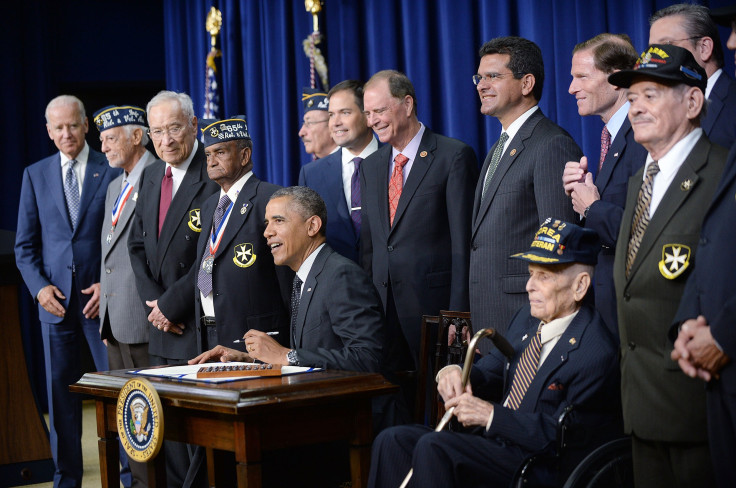
Friday May 8th marks V-E Day and this year will be the 70th anniversary of the Allied victory in Europe. One thing you can expect is plenty of pomp and pageantry across the pond, and military honors for the dwindling number of WWII veterans still alive in the U.S. Hundreds of thousands of Americans participated in in the fight against Nazi Germany and countless died fighting on the beaches of France, in the cities of Italy and along the rivers of Germany itself. However, until recently, many of those veterans’ sacrifices went unrecognized. In particular, minority veterans including Mexican-American and Puerto-Rican American soldiers were ignored by history, had their stories white-washed or received second-class treatment for their first-class valor. To celebrate V-E day, we’ve made a list of 14 things you should know about the accomplishments of Latinos during World War 2.
Over 500,000 Latinos (including 350,000 Mexican Americans and 53,000 Puerto Ricans) served in WWII United States was a place of explicit discrimination towards Latinos -- A.K.A “dumb Mexicans” -- in the 1940s.
Sacrifices by Latino veterans in WWII inspired many of them to fight for equality. As one veteran said: "We put our lives on the line to make a better life for everybody, so we said, 'Let's exercise it. Let's ask for our rights.' "
Rudolf “Rudy” Davila: the Staff Sergeant of Hispanic Filipino descent was one of more than a dozen Asian-Americans awarded the Medal of Honor in 2000 after a thorough review of their military records found that they had been given inferior commendations for valor in the battlefield. “On one occasion, he emptied three ammunition boxes firing a machine gun at Germans barricaded in a house, then charged the building and lobbed in hand grenades.”
Until journalists and scholars started collecting their stories a few years ago in oral histories, Latino veterans of WWII were "Essentially erased from history."
David Barkeley: This Private from Texas volunteered to swim down a river in France to scope out an enemy position. Despite getting shot at while swimming, he made it far enough to scope out a machine gun nest and other enemy positions. On the way back to his unit, Barkeley drowned in the river, allegedly from cramps. He was awarded the congressional medal of honor.
Unlike African Americans, Latinos were not segregated into separate units. However, there are two that were predominately Latino: the 36th Infantry Division from Texas and the 65th Infantry Regiment from Puerto Rico.
The 36th Infantry Division was the first group of Americans to advance on land in Italy, in Salerno.
Around 2,000 of them died in the controversial crossing of Rapido River, which was supposed t be a diversion for another assault.
The 65th Infantry Regiment was nicknamed the “Borinqueneers” after the Taino name for the island that most of the troops called home.
The 65th started their role in the European theater in 1944 fighting in the French Alps
Augustin Romero Calero: the highly decorated Sergeant fought with the 65th. He won a Silver star and the French Croix de Guerre. One of his many exploits: attacking a squad of enemy German soldiers with a machine gun, killing 10, and taking another 21 prisoner.
Undocumented immigrants from Mexico helped the war effort through their labor in the Bracero program. That included 50,000 agricultural workers and 75,000 Mexican railroad workers who were often exploited. All were dismissed by 1965.
Richard Candelaria: an Air Force Lieutenant, he was a pioneering ace who shot down six german planes including one of the worlds first jet aircraft, Hitler’s ME-262.
© 2025 Latin Times. All rights reserved. Do not reproduce without permission.



